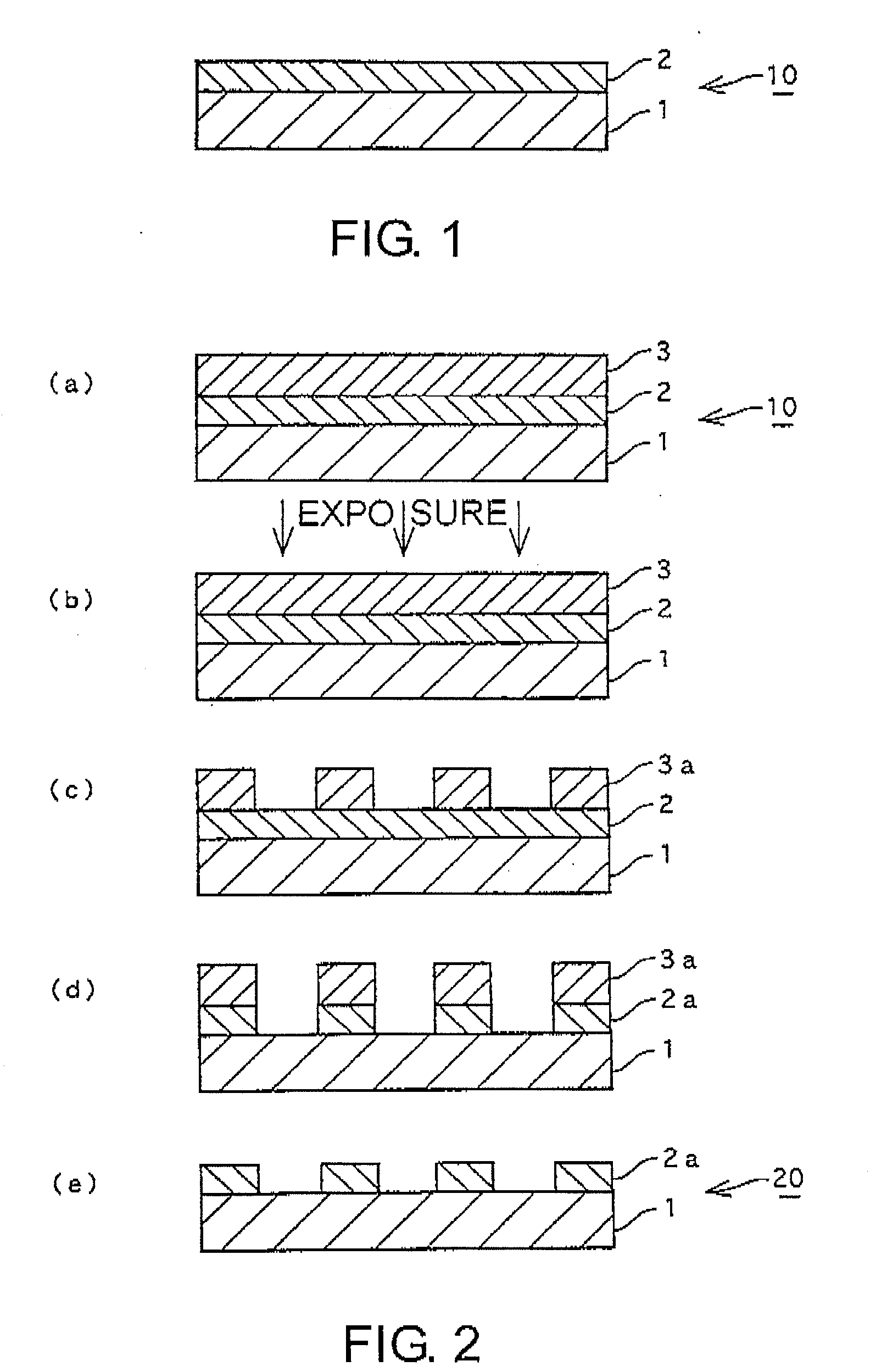Photomask blank manufacturing method and photomask manufacturing method
a manufacturing method and technology of photomask, applied in the field of photomask blank manufacturing methods, can solve the problems of affecting the performance of the mask, the degradation of the mask due to repeated use of the photomask, and the change of transmittance and phase difference, so as to achieve significant reduction of resolution and the effect of lowering the contrast at the pattern boundary
- Summary
- Abstract
- Description
- Claims
- Application Information
AI Technical Summary
Benefits of technology
Problems solved by technology
Method used
Image
Examples
first embodiment
[0048]This embodiment is a method of manufacturing a photomask blank having, on a light-transmissive substrate, a thin film for forming a transfer pattern and comprises forming, on the light-transmissive substrate, the thin film made of a material containing a metal and silicon, and then performing a treatment to modify (change the property of) a main surface of the formed thin film in advance so that when exposure light having a wavelength of 200 nm or less is accumulatively irradiated on a thin film pattern of a photomask to be produced by patterning the thin film, the transfer characteristic of the thin film pattern does not change more than a predetermined degree.
[0049]The light-transmissive substrate is not particularly limited as long as it has transparency with respect to an exposure wavelength to be used. In this invention, a quartz substrate and various other glass substrates (e.g. soda-lime glass substrate, aluminosilicate glass substrate, etc.) can be used and, among them...
second embodiment
[0062]In this embodiment, as the treatment to modify the main surface of the thin film in advance, annealing by flash lamp irradiation is carried out in an atmosphere containing oxygen with an energy density of 5 to 14 J / cm2. If the irradiation energy density is less than 5 J / cm2, there is a problem that the wash resistance and the hot water resistance are reduced. On the other hand, if the irradiation energy density is higher than 14 J / cm2, there arises a possibility of degradation of the thin film itself.
[0063]In this invention, it is particularly preferable that the energy density in an atmosphere containing oxygen for the flash lamp annealing be in a range of 8 to 12 J / cm2.
[0064]In this embodiment, the flash lamp annealing is preferably carried out, for example, in the atmosphere or in an atmosphere containing oxygen and is particularly preferably carried out in an atmosphere containing oxygen (e.g. a mixed gas atmosphere of oxygen and nitrogen).
[0065]It is preferable that the s...
third embodiment
[0071]In this embodiment, as the treatment to modify the main surface of the thin film in advance, art oxygen plasma treatment is carried out. Specifically, the oxygen plasma treatment is carried out, for example, by setting the inside of a chamber to an oxygen gas atmosphere and applying a predetermined RF ICP power and RF bias power to thereby convert an oxygen gas into a plasma and irradiating the oxygen plasma on the thin film placed in the chamber.
[0072]It is preferable that the substrate coated with the thin film be heated in the oxygen plasma treatment.
[0073]The treatment time by the oxygen plasma irradiation (irradiation time) may be determined by taking into account both the oxygen plasma treatment conditions and the thickness of a surface layer, to be modified by the treatment, of the thin film and is, in general, suitably about 1 to 10 minutes.
[0074]In this embodiment, the thickness of the surface layer, modified by the oxygen plasma treatment to modify the main surface o...
PUM
| Property | Measurement | Unit |
|---|---|---|
| wavelength | aaaaa | aaaaa |
| thickness | aaaaa | aaaaa |
| thickness | aaaaa | aaaaa |
Abstract
Description
Claims
Application Information
 Login to View More
Login to View More - R&D
- Intellectual Property
- Life Sciences
- Materials
- Tech Scout
- Unparalleled Data Quality
- Higher Quality Content
- 60% Fewer Hallucinations
Browse by: Latest US Patents, China's latest patents, Technical Efficacy Thesaurus, Application Domain, Technology Topic, Popular Technical Reports.
© 2025 PatSnap. All rights reserved.Legal|Privacy policy|Modern Slavery Act Transparency Statement|Sitemap|About US| Contact US: help@patsnap.com


